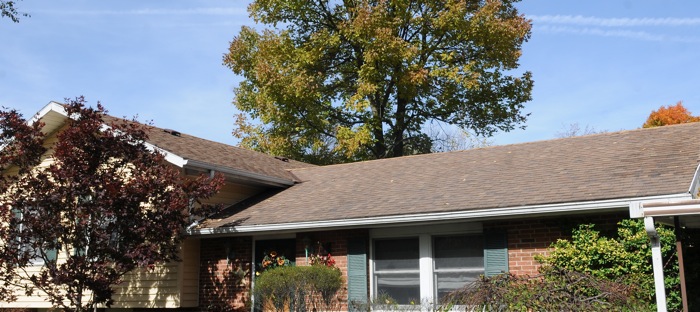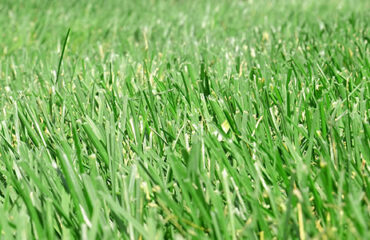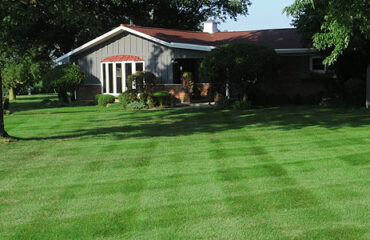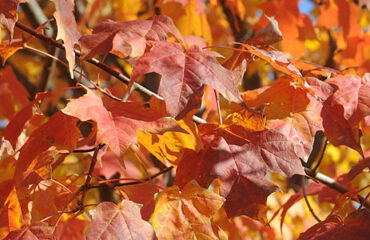The controversy, and the angst, has raged in recent years…the emerald ash borer and its devastating impact on ash trees, wild and hybrid, in forests and on residential properties.
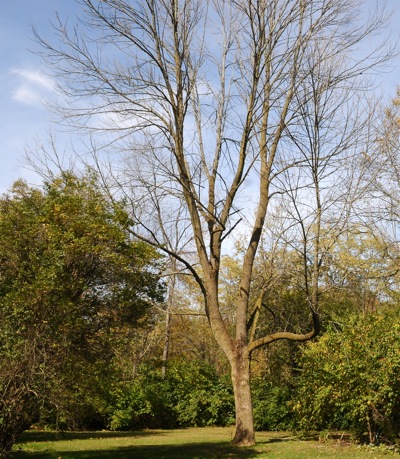
Visual Evidence…While the tree pictured at the top of the page behind the house is alive and well, another ash tree in the yard that’s been neglected is dead from the emerald ash borer.
All you have to do is drive by and look. The evidence is compelling. It’s ugly. And, it’s heart-breaking for many who have framed their properties with different varieties of this popular hardwood.
Left untreated, the devastation is imminent. Your tree(s) will be subject to the fast-moving migration of insects that began its march from Michigan onto Ohio trees almost 20 years ago. In just that short time, you can find their handiwork in every one of Ohio’s 88 counties.
But there is hope, and there is evidence that timely applications of specific pesticides emmamectin benzoate and dinotefuran can actually save your trees and protect your investment.
In fact, the accompanying photo with this week’s blog was made the first week of October, in Piqua, and shows full leaf retention on an adult “Patmore” variety ash tree that’s been treated for the past seven years. This is in stark comparison to other trees in a surrounding woodlot that have long since lost their vigor and ultimately died.
We hear about the emerald ash borer every year…either questions as to how to prevent it, or from customers requesting that the dead trees on their property be removed and replaced.
“How long will it last?”
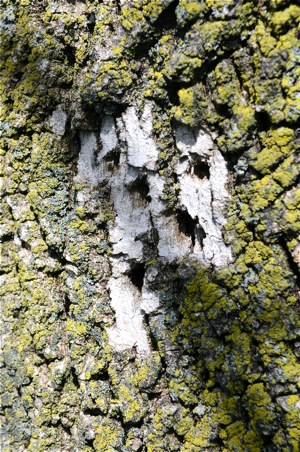
Tell-tale signs of the emerald ash borer. If your trees have these visual markings you might be too late to save them.
No one knows, exactly. But like many other natural plant diseases (Dutch elm, for instance), once the food source is eliminated, so too, is the threat of the insect. They have to eat to live.
“Will this bug affect other trees, like maples and oaks?”
There is no evidence of that at this point that the EAB will harm other species.
“What can I do to save my trees?”
Call Ever-Green and ask specifically for Tim Anderson, who heads our tree service division. He has decades of experience in detection and treatment of hardwood diseases. He can literally save your ash!
And a picture is all the proof you need!

